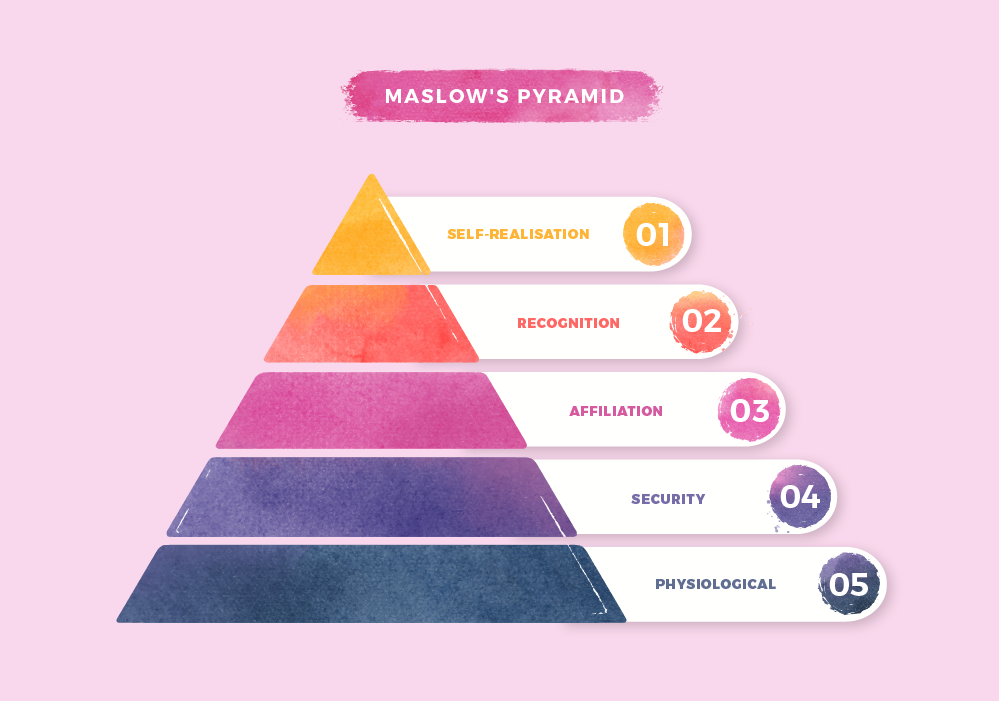For example, meeting physiological needs in the work context can translate into offering services to employees that facilitate their well-being and help them integrate their work and professional lives in a more natural way. Providing a canteen with healthy menus, health assistance or a shuttle service to the company can help employees meet their most basic living needs.
Furthermore, in the workplace, security is not only about a safe physical environment, free from risks and threats, but also about providing open, flexible and comfortable working spaces.

This may include well-equipped work areas that promote creativity, accessibility and collaboration.
Promoting a positive and collaborative work environment is vital for employees to feel part of a team and valued for their contribution to shared goals. Good interpersonal relationships with colleagues and superiors not only improve the quality of working life, but also increase motivation and commitment to the organisation. In this article we take a closer look at this topic.
The importance of recognition at work leads us to consider how it influences people’s motivation and continuous effort. Feeling valued for performance not only encourages innovation and overcoming limits, but also strengthens the sense of belonging and commitment to the organisation.